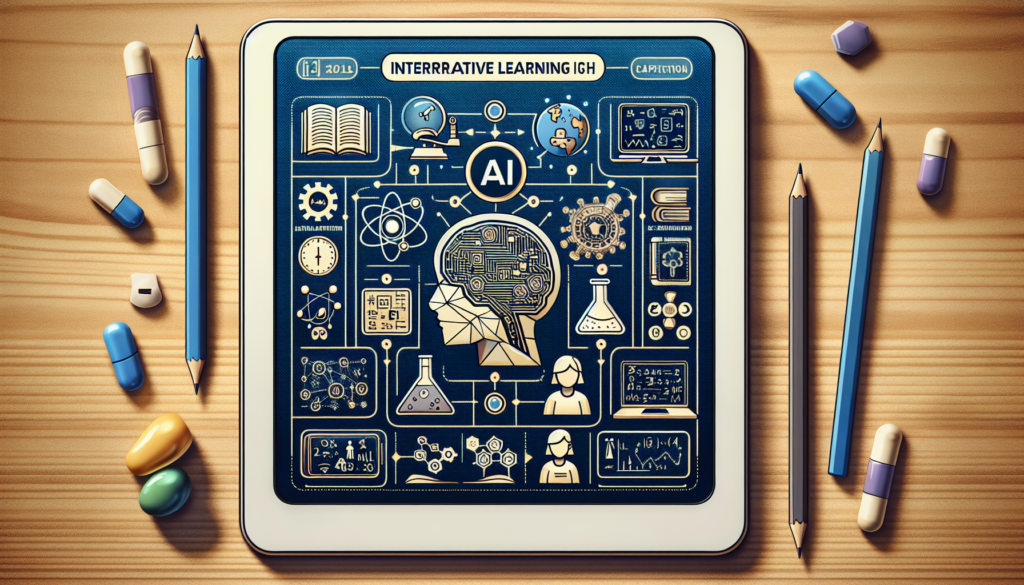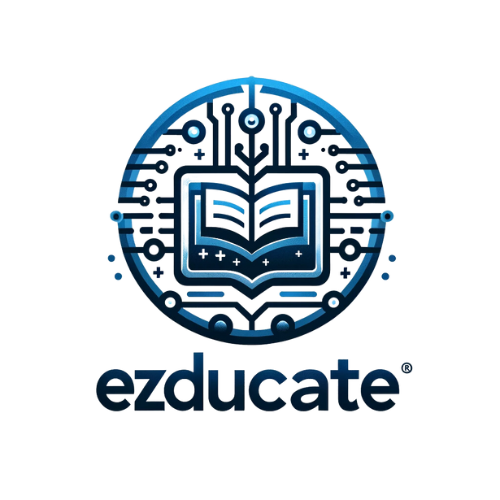Get ready to discover the exciting world of AI educational apps! In this article, we will explore the interactive elements that these innovative apps offer and how they enhance the learning experience. From engaging quizzes and games to personalized feedback and virtual simulations, AI educational apps go beyond traditional teaching methods to create an immersive and interactive environment for learners of all ages. So, grab your device and get ready to embark on a learning adventure like never before!

Gamification
Rewards and badges
AI educational apps often incorporate gamification elements to enhance the learning experience. One popular feature is the use of rewards and badges. As you progress through the app and complete learning activities, you have the opportunity to earn virtual rewards and badges. These can be in the form of points, virtual currency, or special items. These rewards serve as a motivator to keep you engaged and motivated to continue learning. They provide a sense of accomplishment and can be a fun way to track your progress.
Leaderboards and competitions
To add a competitive element to the learning process, AI educational apps often include leaderboards and competitions. You can see how you rank compared to other learners using the app. This creates a sense of healthy competition and can push you to strive for improvement. Leaderboards encourage you to put in extra effort to reach the top spot or surpass your peers. Moreover, some apps even organize competitions and challenges where you can compete with other learners in real-time, making the learning experience more engaging and exciting.
Levels and progression
AI educational apps frequently incorporate the concept of levels and progression to provide a sense of accomplishment and advancement. As you complete tasks, quizzes, or modules, you earn experience points or unlock new levels. This allows you to track your progress and provides a clear indication of your knowledge and skills. Moving to higher levels often comes with new challenges, content, or features, encouraging you to keep learning and exploring new concepts. Levels and progression can make the learning journey more enjoyable and satisfying.
Adaptive Learning
Personalized learning paths
One of the key benefits of AI educational apps is their ability to offer personalized learning paths. These apps use sophisticated algorithms to assess your current knowledge, skills, and learning style. Based on this assessment, they create a customized learning path that is tailored to your individual needs and goals. This means that you can focus on areas where you need more practice or challenge yourself with advanced content if you are already proficient in a particular subject. Personalized learning paths ensure that your learning experience is efficient, effective, and engaging.
Real-time feedback
AI educational apps provide real-time feedback to help you understand your progress and areas that require improvement. As you complete quizzes, assignments, or activities, the app instantly provides feedback on your performance. This feedback can include explanations of incorrect answers, suggestions for improvement, or praise for correct responses. Real-time feedback helps you identify your strengths and weaknesses right away, allowing you to address any misconceptions or gaps in knowledge immediately. This immediate feedback loop enhances the learning process and helps you make continuous progress.
Adjustable difficulty levels
To ensure a challenging yet manageable learning experience, AI educational apps often offer adjustable difficulty levels. These apps assess your performance and adjust the difficulty of learning activities accordingly. If you consistently demonstrate strong skills in a particular area, the app may increase the difficulty to provide more advanced content and challenges. On the other hand, if you struggle with certain concepts, the app can adjust the difficulty to provide additional practice and support. Adjustable difficulty levels ensure that you are always in the optimal learning zone, maximizing your growth and success.
Virtual Reality
Immersive learning experiences
AI educational apps that incorporate virtual reality (VR) provide immersive learning experiences that transport you to different environments and scenarios. Through VR technology, you can explore historical locations, visit foreign countries, or even travel through time. These immersive experiences allow you to engage with content in a unique and interactive way, making learning more memorable and impactful. Instead of simply reading about a topic, you can fully immerse yourself in a virtual environment that brings the subject to life, fostering a deeper understanding and connection.
Simulations and virtual environments
In addition to immersive experiences, AI educational apps utilizing virtual reality often offer simulations and virtual environments. Simulations allow you to practice real-world skills in a safe and controlled virtual setting. For example, you can simulate a chemistry experiment or surgical procedure to gain hands-on experience without any risks. Virtual environments provide a sandbox for exploration and experimentation. They allow you to interact with virtual objects, manipulate elements, and observe the consequences of your actions. These simulations and virtual environments foster practical application of theoretical concepts and enhance critical thinking skills.
Interactive 3D models
AI educational apps with virtual reality capabilities often include interactive 3D models. These models allow you to examine objects, organisms, or structures in a three-dimensional space. You can rotate, zoom in, and explore these models from different angles, gaining a comprehensive understanding of their features and mechanisms. For example, in a biology app, you can explore a 3D model of the human body and examine organs, skeletal structures, or cells. These interactive 3D models provide a visual and hands-on learning experience that enhances retention and comprehension.

Chatbots
Instant answers to questions
AI educational apps frequently employ chatbots to provide instant answers to your questions. These chatbots are programmed with a vast amount of knowledge and can quickly provide you with accurate information or explanations. Instead of searching through textbooks or websites, you can simply ask the chatbot and receive the information you need in real-time. This immediate access to answers ensures that you can clear any doubts or confusion instantly, keeping you on track and facilitating a smooth learning experience.
Personalized tutoring
Chatbots in AI educational apps can also provide personalized tutoring. They can adapt to your learning style, pace, and preferences, providing tailored explanations, examples, and practice opportunities. Whether you need help with a specific concept or require additional clarification, the chatbot can guide you through the learning material and ensure your understanding. Personalized tutoring through chatbots allows for individualized support and guidance, enhancing your learning outcomes.
Engaging conversational AI
Chatbots in AI educational apps are often designed to be engaging and conversational. They can have human-like qualities, engaging in natural and interactive conversations with you. This conversational AI makes the learning process more enjoyable and less intimidating. Instead of feeling like you are interacting with a machine, the chatbot can provide a sense of companionship and support. Engaging conversational AI fosters a positive learning environment and promotes active participation.
Natural Language Processing
Voice commands and responses
AI educational apps that incorporate natural language processing (NLP) allow you to interact using voice commands and receive voice responses. Instead of typing or selecting options, you can simply speak to the app and ask questions or provide instructions. The app understands your voice commands and responds accordingly, making the interaction more convenient and efficient. Voice commands and responses add a sense of interactivity and make the learning experience more user-friendly.
Language understanding and generation
NLP in AI educational apps enables language understanding and generation capabilities. These apps can comprehend the context and meaning of your queries, allowing for more accurate responses. For example, if you ask a question with multiple parts, the app can understand each component and provide a comprehensive answer. Similarly, AI educational apps can generate language-based content, such as explanations or summaries, based on the input provided by the user. Language understanding and generation ensure a more sophisticated and nuanced learning experience.
Speech recognition and translation
Another valuable feature of NLP in AI educational apps is speech recognition and translation. These apps can accurately transcribe your spoken words and convert them into written text. This is particularly useful for language learning, as it allows you to practice speaking and receive instant feedback. NLP can also facilitate translations between different languages, allowing you to learn and communicate in a foreign language more effectively. Speech recognition and translation broaden the accessibility and applicability of AI educational apps.
Speech Synthesis
Text-to-speech functionality
AI educational apps often include text-to-speech functionality, allowing written text to be converted into spoken words. This feature benefits learners with different preferences or needs. By listening to the content being read aloud, you can reinforce auditory learning and improve comprehension. Text-to-speech functionality also assists learners with visual impairments by providing an alternative mode of accessing information. Additionally, this feature enables users to multitask, listening to the content while performing other activities.
Pronunciation guidance
Another advantage of speech synthesis in AI educational apps is pronunciation guidance. When learning a new language, correct pronunciation is crucial. AI apps can accurately pronounce words and sentences, serving as a model for learners. By listening to the app’s pronunciation and comparing it to your own, you can improve your pronunciation skills. This guidance ensures that you develop accurate pronunciation habits from the beginning, setting a strong foundation for language learning.
Audio feedback and instructions
Speech synthesis in AI educational apps allows for audio feedback and instructions. Instead of relying solely on written feedback, the app can provide spoken feedback personalized to your progress and performance. This audio feedback can include specific guidance, positive reinforcement, or suggestions for improvement. Audio instructions also guide you through learning activities or tasks, ensuring clarity and enhancing engagement. By incorporating spoken elements, AI educational apps cater to different learning styles and preferences.
Data Analytics
Tracking and analyzing learner progress
AI educational apps utilize data analytics to track and analyze your progress throughout the learning journey. These apps collect and analyze data on your performance, time spent on activities, areas of strengths and weaknesses, and completion rates. By tracking your progress, the app can provide insights into your learning habits and patterns, allowing you to identify areas for improvement. This data-driven approach helps you understand your learning trajectory and make informed decisions to optimize your learning experience.
Identifying areas for improvement
Data analytics in AI educational apps identify areas where you need additional support or practice. By analyzing your performance and patterns, the app can pinpoint specific concepts or skills that require further attention. This allows the app to provide targeted recommendations or resources to address these areas of improvement. By focusing on these identified areas, you can make more efficient progress and overcome any learning obstacles.
Customized recommendations
Based on the data collected and analyzed, AI educational apps offer customized recommendations tailored to your individual needs and learning goals. These recommendations can include suggested learning materials, additional practice exercises, or related topics to explore. By providing personalized recommendations, the app ensures that you have access to resources and content that align with your interests and learning preferences. Customized recommendations assist learners in maximizing their learning outcomes and maintaining motivation.
Collaborative Learning
Virtual group projects and discussions
AI educational apps facilitate collaborative learning through virtual group projects and discussions. These apps provide opportunities to collaborate with other learners in a virtual environment. You can work together on projects, assignments, or problem-solving tasks, fostering teamwork and communication skills. Virtual group projects and discussions encourage active participation, idea sharing, and collaboration across diverse perspectives. By engaging in collaborative learning, you gain valuable interpersonal skills and deepen your understanding through collective knowledge.
Peer-to-peer communication
AI educational apps often include features that facilitate peer-to-peer communication. You can connect with other learners using the app, exchanging ideas, insights, and support. This peer-to-peer communication can take the form of text-based messaging, discussion forums, or video chats. Engaging with peers provides opportunities for social learning, as you can learn from each other’s experiences and perspectives. Peer-to-peer communication fosters a sense of community and belonging, creating a supportive learning environment.
Shared learning materials
Collaborative learning in AI educational apps also involves the sharing of learning materials. Learners can contribute resources, materials, or study guides that they find helpful or interesting. These shared materials can include notes, summaries, or additional practice resources. By sharing these resources, learners can support each other’s learning and expand their access to diverse perspectives. Shared learning materials promote a culture of collaboration and enhance the overall learning experience.
Multimedia Integration
Videos and animations
AI educational apps integrate multimedia elements such as videos and animations to provide engaging and interactive learning experiences. These apps often include educational videos that explain complex concepts in a visually appealing and concise manner. Additionally, animations are used to illustrate abstract or dynamic processes, enhancing comprehension and retention. By incorporating videos and animations, AI educational apps cater to different learning preferences and make learning more enjoyable and memorable.
Interactive images and diagrams
In addition to videos and animations, AI educational apps frequently utilize interactive images and diagrams. These images and diagrams can be manipulated or explored, allowing for a hands-on learning experience. For example, in a science app, you can interact with an interactive diagram of the solar system, exploring the planets and their characteristics. Interactive images and diagrams foster a deeper understanding of complex concepts by providing a visual and interactive representation.
Audio recordings and podcasts
AI educational apps often incorporate audio recordings and podcasts as part of the learning content. These audio resources can include lectures, interviews, or discussions on specific topics. By listening to these audio recordings, you access information in an alternative format and reinforce auditory learning. Audio recordings and podcasts increase engagement and provide opportunities for learning even in situations where reading is not feasible, such as commuting or multitasking.
Simulations
Real-world problem-solving
AI educational apps that offer simulations provide opportunities for real-world problem-solving. These simulations present you with practical scenarios or challenges that require the application of theoretical concepts. For example, in a business simulation, you may be tasked with managing a company and making strategic decisions. By applying your knowledge in a simulated environment, you can develop problem-solving skills and gain practical experience. Simulations bridge the gap between theory and practice, preparing you for real-world challenges.
Practical application of theoretical concepts
Simulations in AI educational apps enable the practical application of theoretical concepts. Rather than learning concepts in isolation, you can explore how they are interconnected and apply them in relevant contexts. This application-based learning approach enhances understanding and retention. For example, in a physics simulation, you can manipulate variables to observe the effects on a virtual experiment, reinforcing your understanding of cause-and-effect relationships. The practical application of theoretical concepts through simulations deepens your comprehension and prepares you for real-life situations.
Interactive and engaging scenarios
AI educational apps with simulations provide interactive and engaging scenarios that spark curiosity and critical thinking. These scenarios often present challenges or dilemmas that require thoughtful decision-making. By immersing yourself in these scenarios, you actively engage with the content, analyze options, and determine the best course of action. The interactive nature of simulations keeps you invested and encourages active participation. These engaging scenarios foster problem-solving skills, creativity, and analytical thinking.




